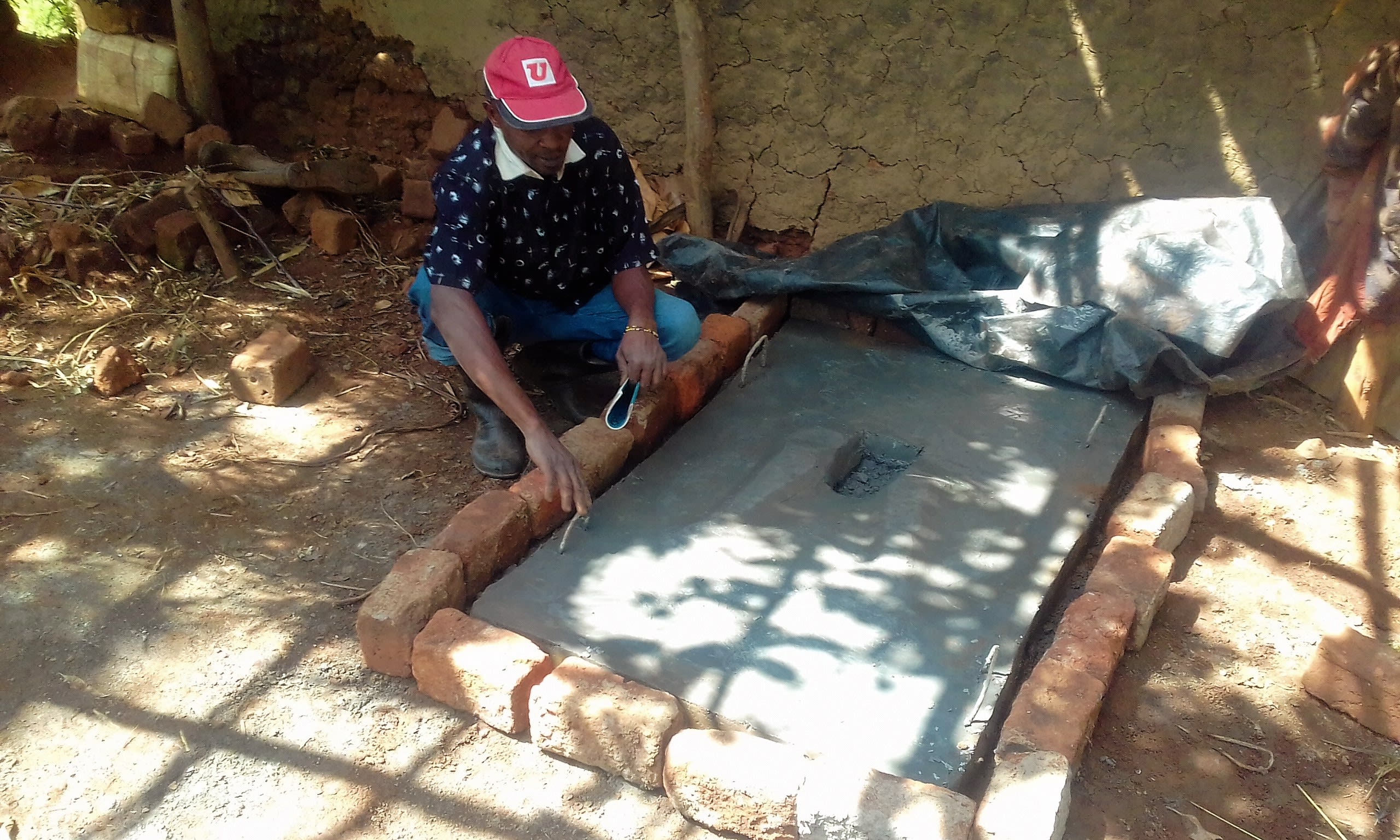This project is a part of our shared program with Western Water and Sanitation Forum (WEWASAFO). Our team is pleased to directly share the below report (edited for clarity, as needed).
Welcome to the Community
A normal day in Igogwa Community begins at 6 AM with parents preparing their children for school. Once on their way, adults prepare to work. Some go to their farms, while others go to the markets to buy, sell and trade. A majority of adults are farmers and/or casual laborers who look for odd jobs to make ends meet.
Water Situation
Igunza Spring serves over 30 households living here in Igogwa. It is named after the landowners, who report that the spring has never run dry.
The spring is in bad shape with the catchmemnt area exposed to contamination through human and animal activity and runoff from storm waters.
Instead of dunking their containers in the water, locals have fixed a pipe in the muddy eye of the spring, directing water through it. Now, a container just has to be placed underneath and left until filled.
"Most of the water drawn from the spring is used almost immediately," reports Mr. Bernard Elegwa. It is used for drinking, cooking, cleaning, and irrigating farms. After drinking this dirty water, community members suffer from waterborne diseases like typhoid and cholera.
Sanitation Situation
Over half of households have their own pit latrine. Those who do not have their own either share with their neighbor or seek the privacy of bushes to relieve themselves. This waste attracts flies and animals that spread contamination throughout the village. The latrines we observed were all in poor condition, with floors made of wooden slats that have begun to rot. These can't be cleaned, and are dangerous for users who need to balance as they squat.
A couple improvised hand-washing stations were observed, so it's obvious only a handful of community members value hand-washing. Garbage is deposed of by the kitchen garden, so that whatever composts can be used as fertilizer.
26-year-old farmer, Violet Aruda, has noticed that many of her neighbors don't see the importance of hygiene and sanitation practices. "The sanitation and health of the individuals leaves a lot to be desired. Water is drawn from unprotected spring, and other members have no toilets and instead go for open defecation."
Plans: Hygiene and Sanitation Training
Community members will attend hygiene and sanitation training for at least three days. This training will ensure participants are no longer ignorant about healthy practices and their importance. The facilitator plans to use PHAST (Participatory Hygiene and Sanitation Transformation), CLTS (Community-Led Total Sanitation), ABCD (Asset-Based Community Development), group discussions, handouts, and demonstrations at the spring.
Training will also result in the formation of a committee that will oversee operations and maintenance at the spring. They will enforce proper behavior around the spring and delegate tasks that will help preserve the site, such as building a fence and digging proper drainage.
Plans: Sanitation Platforms
On the final day of training, participants will select five families that should benefit from new latrines.
Training will also inform the community and selected families on what they need to contribute to make this project a success. They must mobilize locally available materials, such as bricks, clean sand, hardcore, and ballast. The five families must prepare by sinking a pit for the sanitation platforms to be placed over. All community members must work together to make sure that accommodations and food are always provided for the work teams.
The rest of the households that do not have latrines will be motivated to construct a pit in order to safeguard their water from fecal contamination.
Plans: Spring Protection
Protecting the spring will ensure that the water is safe, adequate and secure. Construction will keep surface runoff and other contaminants out of the water.
Fetching water is predominantly a female role, done by both women and young girls. Protecting the spring and offering training and support will therefore help empower the female members of the community by giving them more time and efforts to engage and invest in income-generating activities.

 Protected Spring
Protected Spring
 Rehabilitation Project
Rehabilitation Project






























